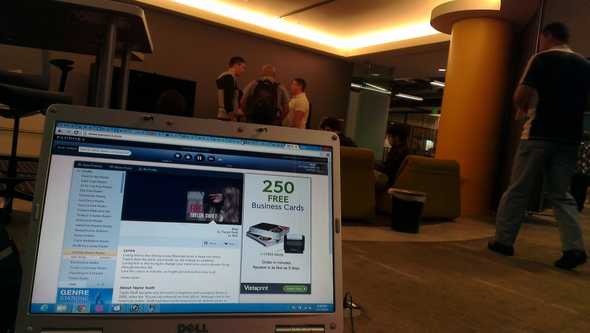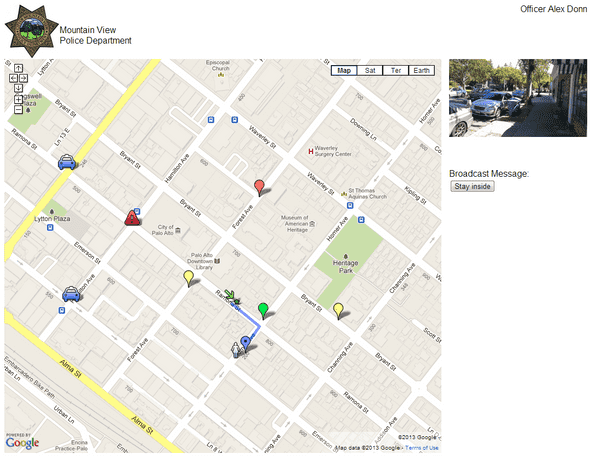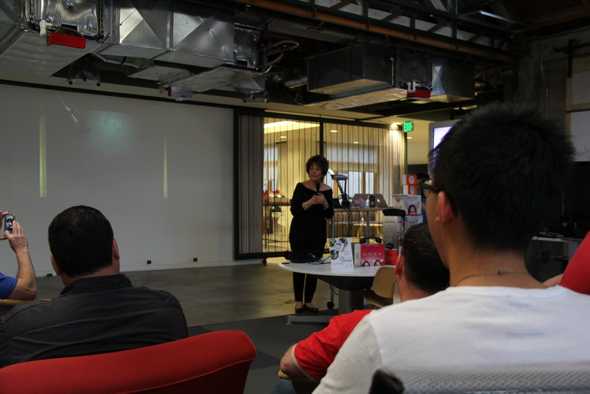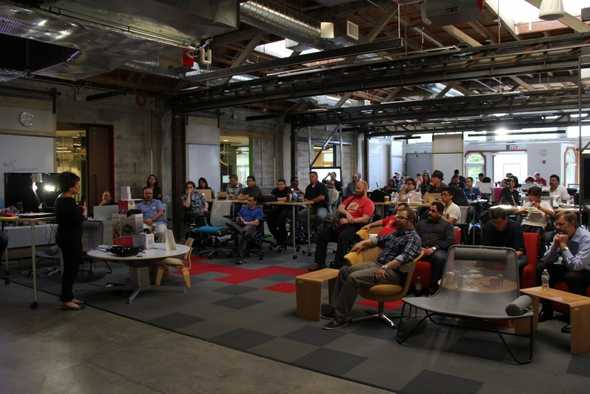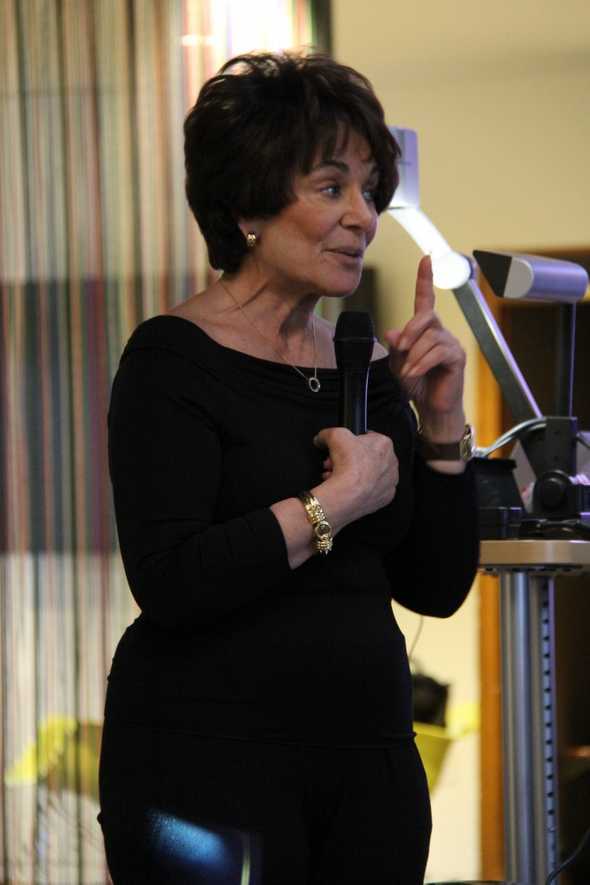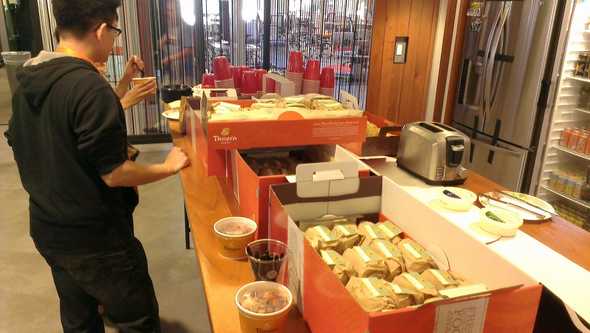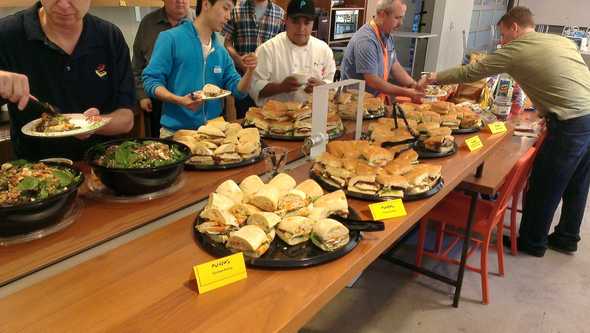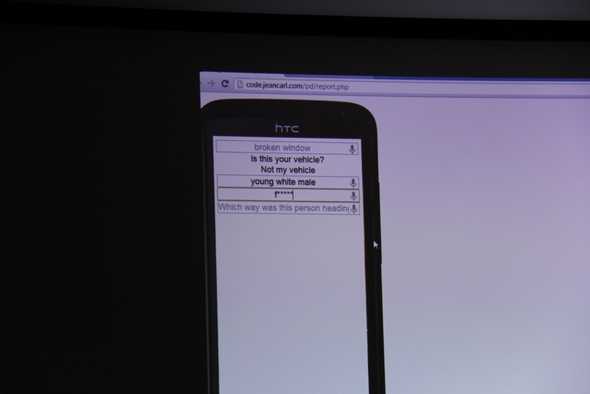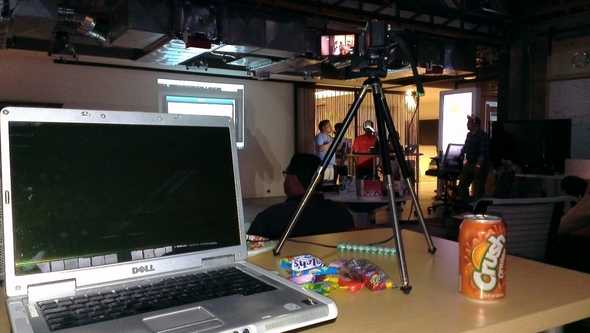AT&T Public Safety hackathon
May 20, 2013 |
AT&T held another hackathon this weekend at the AT&T Foundry in Palo Alto. This one was focused on public safety and making dangerous situations safer using technology.
On Friday night, a number of law enforcement professionals from across the country came to talk about what life is like being an officer and protecting our communities. It was a gold mine of ideas that should have motivated everyone to step it up to the next level.
As I blogged about on Friday afternoon, there are so many things that can go wrong when responding to an emergency. I didn’t even touch on what these guys said. By the end of the evening I can honestly say I felt defeated. With all my skills and motivation, public safety is a really hard problem to solve. Anything I could create in 24 hours would barely touch what we as a country and the world need to solve. It’s a never-ending battle. With this hackathon, though, we can start small and make a difference.
Some things that really got to me was the example where the officer making a traffic stop has to keep a visual on the suspect. One second looking down at a computer screen is enough time for a suspect to fire a bullet at the officer. Wow, when you put it that way, we have to change the way an officer gets information. A heads-up display can be used to provide the officer valuable information. Is that why officers and dispatchers still communicate license numbers over the air?
Another example was license plate recognition software. If a vehicle is fleeing the scene of a crime, the plate can be put into a system that connects to other cities automaticall. Other patrol cars are automatically scanning every license number it can see as it drives down the street. It just so happens a patrol car in another city captures the license plate that matches the fleeing vehicle. The officer is alerted that this vehicle is connected to a crime and can proceed to do a traffic stop. You have taken a moving needle in a ever changing haystack and making it super simple and automatic to locate the needle. That was impressive.
With many ideas and so few hours to code, it was time to get down to business.
Mountain View iReport
I have always had a problem when I have something to report that my police department should know about. Do I use social media? Do I call 911? Do I call the non-emergency number? What is that number again? I had a small card on my fridge that I got from the PD outreach at one of the festivals downtown. But my magnets took over that real estate. I also changed cellphones and never put the number on the new phone. I’ll get to it after I finish this movie. Honest! It’s been at least six months. Seriously, I’ll stop this procrastination. Eventually. Probably after I can’t make the phone call and realize the fatal cost of my stupid procrastination.
I’m not alone. At the beginning of my presentation, I asked a simple question. Do you know the non-emergency phone number? No one raised their hands. I asked about the emergency number, and most raised their hands. That wasn’t surprising, but it was disappointing.
Even if I had the phone numbers, I, a normal citizen have to determine whether the situation I’m reporting is an emergency, something timely, something that can’t be acted upon, or just another datapoint. I think of myself as someone who can analyze these situations better than the average citizen. I’ve been there, done that numerous times. So if a percentage of our population has no clue how to report an incident, or doesn’t take the time to actually report the situation, how can we help them to do so.
I created a simple mobile app screen. There are two critical buttons. The emergency and non-emergency phone numbers that you should call that are customized to your current location. If I’m in Palo Alto, a Mountain View non-emergency number won’t help me. I travel occasionally and sometimes I have no idea what city or state I am in. Wait a minute while I pull out Google Maps and get my current location. Oh Gatlinburg, Tennessee. Wait a moment while I Google Gatlingberg TN non-emergency number.
That first result has a couple of numbers, I’m feeling overwhelmed. Let’s try the second result, ChaCha. Where’s my pen so I can write the number down. With my shaky hands, I try to dial the number and misdial. If I’m lucky, I’ll get this right before I give in. This is why we default to calling 911. At this point I don’t care if it’s not an emergency. I am panicking because I can’t get the right number to call. It is now an emergency in my mind.
I know this happens everyday, all across the country. And those dispatchers take the call like it’s the first one they have received today. They process it, never dismissing my concerns. And then they answer the next call, which might be the life-threatening call of someone in cardiac arrest. That’s a true emergency.
Is the female screaming and the car spinning it’s tires at 1:20 in the morning an emergency? What about the car driving 25 mph in a 45 mph? Or the car with their headlights out? Damn it, what am I supposed to do? Sometimes I choose not to be a good citizen and just hope for the best. It’s too much trouble and I don’t want to bother the dispatcher with my report. I shouldn’t feel that way but I do because the system is broken.
I also added a way to ask a question using voice input. You could say I heard a gunshot, or saw a broken window, or my neighbor is playing loud music. Depending on the severity, you may get a FAQ telling you how to handle loud music. Talk with your neighbors, a page on the Mountain View website says. I shouldn’t have to Google for the answer. Good to know the non-emergency number should be second after my neighbor refuses to answer the door.
The problem I had was that my first example was a scenario where I heard a gunshot. The app originally took a report and sent it to the dispatcher. But after reviewing it with two advisers who were on hand to answer any questions we had, it really became a situation when I should call 911. But that became very ambiguous. In the middle of Texas, gunshots are common. Those are hunters. Nothing to be worried about. In the middle of Palo Alto. Well, that could be serious. So maybe the app could differentiate the situation based on location?
I am still conflicted in how emergencies are classified. So is the gunshot example classified differently based on location? Could the app differentiate that? As I quickly found out, artificial intelligence won’t be able to handle what a human dispatcher can think through and solve immediately. So we’re back to calling 911 because that’s the default way to handle these reports.
Let’s say I spot a broken window, or my bike was stolen. Actually, my bike was stolen. 311 now handles those reports for San Francisco. I called in, gave them details and got a case number. They don’t send an officer out. I don’t send pictures of where I locked up my bike and the exact location isn’t communicated because it is in the middle of a very long block and the building I’m in front of doesn’t have a street number because it’s a massive building. I’m on the phone so I can’t use Google Maps to get a more approximate location. I’m irritated and I don’t properly report the property theft. And I don’t have a bike so I have to walk to the train station in the rain.
So this situation should (depending on your criteria, which feels like it was constantly changing) be a good example where I submit a report. It isn’t glamorous and doesn’t solve crime immediately. But it does take the load off of 911 (or 311, or maybe it’s another number, give me a second!). The ten minutes I spent on the phone with 311 meant two or three calls (that’s my guess) got answered by 911 and may have saved lives. And attaching pictures and video is easy.
If you’re still with me, I apologize for this being all over the place. It is a very complex problem that still hasn’t been solved. And I still don’t understand it myself, even with experience reporting various incidents I have deemed to be important to report. So without a detailed knowledge of how the police department operates, this next part could be completely wrong. But as an engineer and geek, I like to dream up innovative ideas that may never see the light of day. But without the seed, the plant will never grow.
What happens when there are multiple reports of a loud noise (was that a gunshot or a firework)? Occasionally, Mountain View residents hear aerial fireworks. Some citizens call in and report their location. It should be relatively easy to create a perimeter as more locations are added. Why make the dispatcher dedicate their time to a trivial problem. Can’t technology be used to triangulate reports and use past incident reports to predict possible outcomes? Yes there is ShotSpotter, and that’s a good, but it is an expensive start.
Keeping with my original gunshot example, I wanted to take incoming reports and start mapping them. Analyzing all the data, my dream solution was to be able to accurately inform officers of traffic obstructions and the predicted path the suspect was fleeing. A big flaw in this is that it wouldn’t be 100% accurate. And that brings up liability. The police department is accountable for everything it does. Everything has to be documented. Everything has to be coordinated. Everything has to work together. That’s why dispatchers are critical in the successful operation. So sending officers on a wild goose chase isn’t good (or efficient).
Seeing this data visually can help aid in the process of tracking down where the crime is happening. Like the Boston marathon bombings, the more pictures and video they had, the easier it was to locate the suspects.
Where do we go from here?
In trying to solve a one problem, it seemed like there were even more problems created or exposed. So Mountain View iReport isn’t the end all, be all solution. The one concept I walked away with was a voice recognition solution where you don’t have to type in anything. My shaky fingers when I’m trying to find that phone number won’t be able to accurately type what I’m trying to report. My first method of communication is voice. Let me talk this through until you understand what I am saying and can act upon the situation I’m reporting.
As for determining what is and what isn’t an emergency and how to respond to each situation, that’s a hard one to solve. Maybe we have to rethink how to better handle an influx of calls when everyone notices something is wrong and calls in. To at least encourage people to start reporting what they see. Because if they don’t, no one else will, and there will be no data points to work with to solve the problem we all see and ignore because “the person standing next to me will report it” (sometimes an wrong assumption).
Congresswoman Anna Eshoo
I have been to lots of hackathons, big and small, but this one was different. On Saturday night, our very own Congresswoman Anna Eshoo came to talk to us about the importance of the innovations we were making for public safety. I applaud her for coming on a Saturday night, thanking us for our time and acknowledging the efforts we all can make to make our community safer. Keep us the great work!
Pictures
This was AT&T’s first public safety hackathon. I really, really hope to see more of these hackathons. And it doesn’t have to be a tech company hosting. Why can’t my police department host one and have an open dialogue with the community? Here are some other photos I took throughout the weekend.

